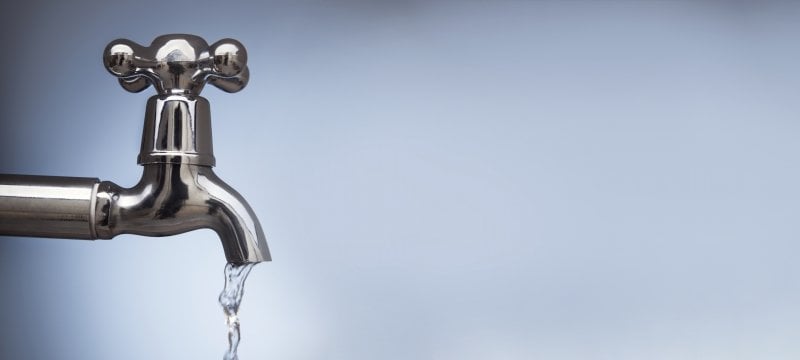In this guest blog, Michigan Tech researchers Shan Zhou and Daisuke Minakata explain how changes at the household level can create a more sustainable water use system.
Human society has traditionally followed the development path of a linear economy, wherein raw materials, products and waste are clearly distinguished from each other. This “take-make-dispose” step-by-step plan has led to significant problems for a human society dependent on a planet with finite resources. Obvious examples are wasting valuable materials, environmental pollution and greenhouse gas emissions.
Meanwhile, “take-make-dispose” encourages a culture of consumption focused on the possession of goods, instead of their use values or values satisfying human requirements. There is a growing awareness among policy makers, environmental advocates, and the research community that the current method of linear economic development occurs at the expense of the health and productivity of ecosystems.
Scholars, policy makers and activists alike have pointed out the need to transit toward a circular economy, which optimizes the use of raw materials and resources, maximizes economic values and minimizes environmental damages. The circular water economy is based on the idea that all water is a resource, rather than a waste product following its use. But, changes at the societal and household level are necessary to establish a more sustainable water use system.
Water crisis in the U.S.
The U.S. is faced with severe water hardships. On the one hand, many communities across the country struggle with challenges regarding aging water treatment and delivery infrastructure, growing populations, and reliable and safe water supplies. Forty states expect to have water shortages during the next few decades that are not related to drought. Millions of U.S. residents are affected by a lack of clean running water and proper plumbing.
About the Researchers
On the other hand, the U.S. has one of the highest per capita water consumptions in the world. The average American household uses about 552 gallons of water per day.
A circular economy offers an opportunity to capture the full potential value of water. However, the systematic discussions of water reduction, reuse and recycling at different economic sectors and levels have just emerged.
What is the circular water economy?
A circular water economy can be realized through the reduction in consumption, non-potable/potable reuse and recycling of graywater and wastewater, recovery of nutrients from blackwater, and recycling of materials for retrofitting and remanufacturing appliances. A circular water economy has the potential to provide a transformative approach to delivering sustainable, efficient and equitable water supply and sanitation services.
And, while establishing the circular water economy requires both state and national approaches with a backbone of thoughtful policy making, decisions made at the household level build a foundation for societal change.
We are members of a group of environmental engineers and social scientists with training in system optimization, input-output analysis and policy analysis. In a recent study, we focus on the microscale household circular water economy. We estimate the net greenhouse gas emissions and water consumption of household appliances under various scenarios based on a combination of assumptions, including electric power projections, household energy sources, household appliance efficiency levels, and water efficiency and recycled graywater quantities.
Carbon emissions and water reduction potentials for U.S. households
Our analysis led to two main findings. First, using 100% renewable-based electricity and eliminating the use of natural gas for household energy would lead to the largest carbon emissions reduction in households. Second and relatedly, household water consumption does not vary by energy sources. The largest water savings potential is in lawn irrigation, which can be decreased from 119 cubic meters to four cubic meters annually through a combination of water-saving irrigation techniques and graywater reuse and recycling. Appliance efficiency upgrades can reduce water consumption from 146 to 228 cubic meters annually, and the water savings potential due to graywater recycling alone ranges from 20 to 70 cubic meters.
How can households adapt to a circular water economy?
Based on our research, there are a few strategies that households can adopt to enhance their water and energy efficiency, reduce environmental impacts and save money:
- Low-flow faucets and showerheads, and low-flush toilets are low-cost options to achieve both water savings and greenhouse gas emissions reductions.
- Households can invest in LED lighting, highly efficient electronics and dishwashers, and lower-cost electric storage water heaters to optimize both water savings and emissions reductions.
- To achieve the optimal level of emissions reductions in the most cost-effective way, households can choose to hand-wash dishes and laundry, instead of using a dishwasher or washing machine, in combination with medium-efficiency space cooling and high-efficiency gas storage water heaters.
An efficient electric coil space heater furnace, although the least efficient, can help reduce costs significantly and achieve the optimal water savings.
Michigan Technological University is an R1 public research university founded in 1885 in Houghton, and is home to nearly 7,500 students from more than 60 countries around the world. Consistently ranked among the best universities in the country for return on investment, Michigan's flagship technological university offers more than 185 undergraduate and graduate degree programs in science and technology, engineering, computing, forestry, business, health professions, humanities, mathematics, social sciences, and the arts. The rural campus is situated just miles from Lake Superior in Michigan's Upper Peninsula, offering year-round opportunities for outdoor adventure.








Comments